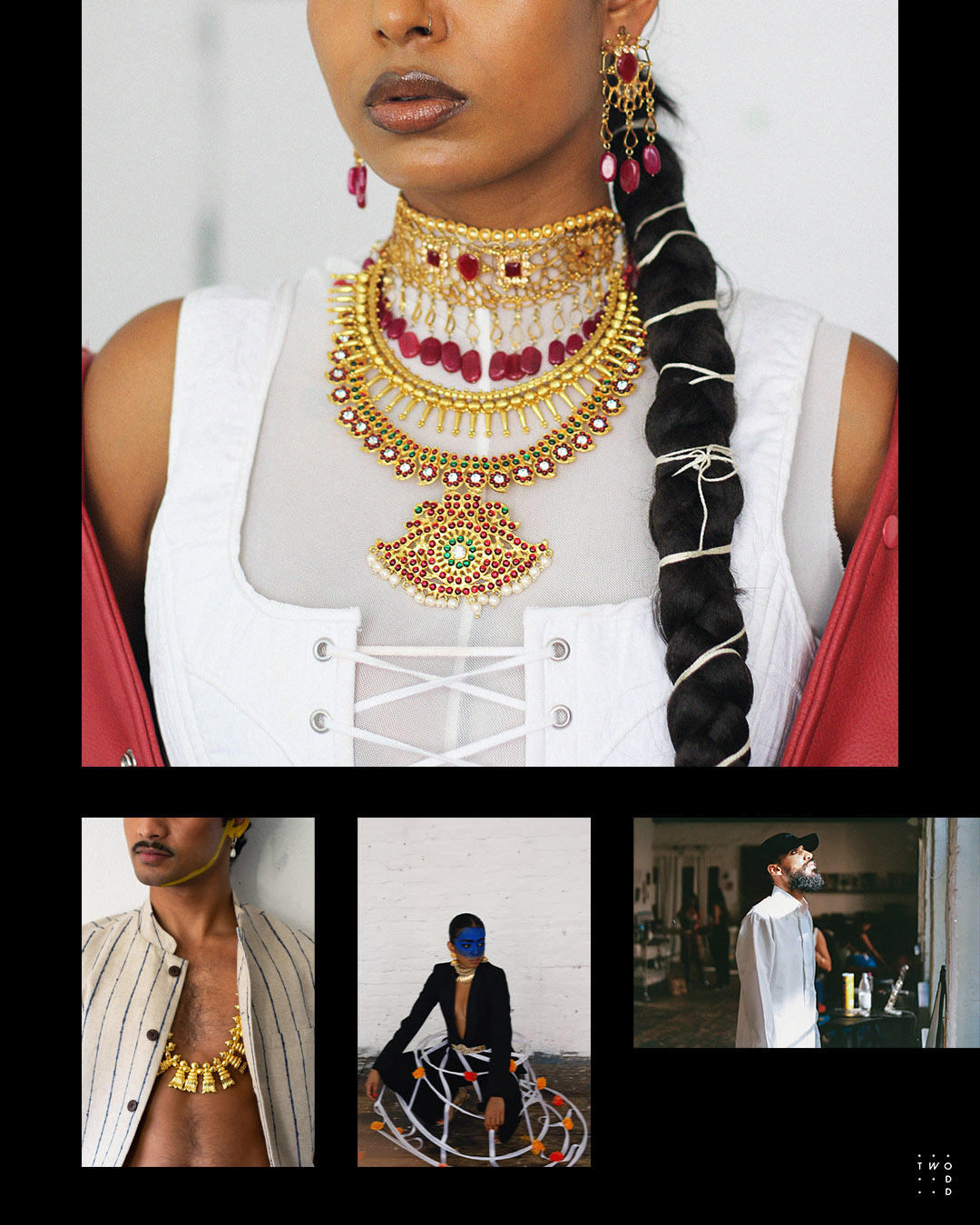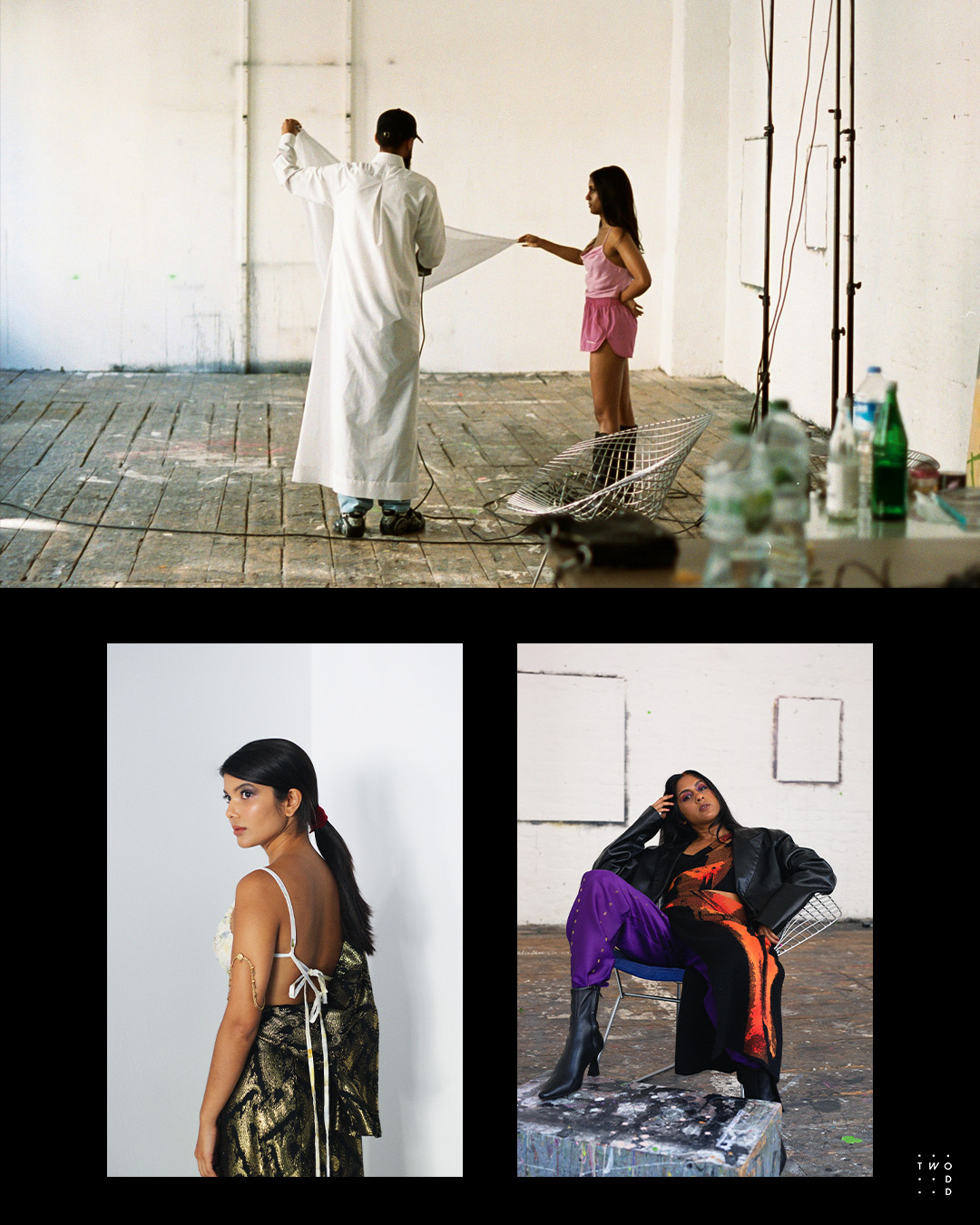The ever-evolving definition of Representation
South Asia Edition Hello, my name is Akshita, and I am going to take you on a personal journey that led to this entire project about the ever-evolving definition of Representation.
Hello, my name is Akshita, and I am going to take you on a personal journey that led to this entire project about the ever-evolving definition of Representation.
I was born and raised in Mumbai, India. I left home at 21 to study and start my career. Since then, I’ve made a home in 5 different countries. This year, I will complete 10 years of being out of India, and with me, my perception of the ever-evolving concept of representation will also complete a decade. It has been quite a rollercoaster. I have had a toxic love-hate relationship with the concept, but I can safely say that my views towards defining it have radically evolved and continue to develop. 
During the first few years, I found it fascinating how oblivious the rest of the world was towards India. I was rather excited to correct this as soon as I was a subject of generalisation. Remarks like 'You don't look Indian, 'You don't sound Indian', and 'You don't dress like an Indian' topped the charts of comments that baffled me. These were based on a monotonous picture that the media portrayed of India and our culture. I was always left wondering, you can't possibly expect over a billion people to eat, dress, sound, and act the same way. What continues to surprise me is that India has a population of over a billion, and is vast geographically, and that is indeed commonly known. Then how can one assume and make conclusions based on this unidirectional media portrayal? How can the only thing you know about India be representative of the one individual you interact with from there?
My excitement of correcting the views of those who didn't seek this information on their own wore off quite early - when I realised the scale and varieties of stereotypical mindsets, I did not want to correct them anymore. At least I knew I wasn't the only one subjected to the generalisation. That gave me a strange comfort but also brought about this agency to talk about representation in different forums.
I was raised in a culture where knowing about your own country was never enough or rewarding, of course, a result of the many problematic societal structures based on history. I only realised after leaving India that the developing-nations’-mentality of being ‘educated’ involved constantly seeking the correct information about the rest of the world – with a hint of inferiority in how we live and a dash of curiosity for the superior-developed-countries and the lives people live there. Our education system is designed around studying the history of countries all across the world, learning about capital cities, seas, and mountain ranges. This unknowingly inculcated a constant urge to learn about the world outside of ours and base our conclusions on research and not on influential external parties like the media. 
As I continue to spend time outside of India, I’m pretty surprised at observing a recurring pattern of how the responsibility for ‘educating’ others on different poorly portrayed cultures, geography, and history, has also somehow landed on people like me. I call the convenient act of not seeking the information on your own your privilege.
Seeking information on sensitive topics might feel like walking on eggshells. But not initiating a conversation because it’ll make you uncomfortable is the lazy way out. Throwing a generalised comment and asking the other person to explain their place is being entitled. 
Stereotypes are not incorrect but incomplete - Dangers of a single story.
Stereotypes exist because there are indeed patterns in how people behave if they were raised in a similar context. But it’s dangerous to assume that stereotypes are personality-defining traits – that would just make people from each country clones of each other. The vulnerability to challenge the stereotypes and break patterns of generalisation will bring inclusivity to our spaces.
I have used Two Odd to creatively express and influence change to complex structures that have personally impacted me. My personal experience with representation initiated this project. But I didn't want this to be only my voice. South Asians are usually clubbed in the same group in the Western World. And when I started reaching out to people from South Asia and involving them, I realised the need to bring this conversation to scale. I want this project to be part of a continuous and open dialogue between people from different developing regions and their approach toward this evolving concept of representation.
The 8 individuals featured here are Usman Bin Latif, Pia Nandita Ahmed, Anahita Sadighi, Florina Vyas, Aadil Kumar, Aathirai Teresia Valentine, Anuka Pokharel along with me. They bring their unique, versatile backgrounds to this project, having a common thread of South Asia to tie their experience in navigating and understanding one's individuality while facing unnecessary generalisation.
The testimonies talk about their evolving perception of their individualistic and South Asian representation while the tailormade portraits are a result of them translating their meaning and idea of representation through their outfits, makeup, and body language. This aims to show the versatility of different south asians' perceptions towards the concept of representation, breaking the existing norm of the one-directional generalisation towards South Asia. 
Media plays a massive role in creating generalised narratives. There is a lack of South Asian representation overall. Whenever there is representation of different cultures, there’s a unilateral view – this lack of versatility creates a limited view of what it means to belong to a particular culture. It uses stereotypes to entertain and reinforces them because it’s the lazy way out. And in most cases where there is the portrayal of different nationalities or cultures, tokenism is masked in the form of diversity and inclusion.
“When I think about South Asian representation I struggle to see stories like mine in campaigns, movies, or shows, because there is only one type of south Asian representation, which caters to the majority and their perception of “brownness” - Aathirai 
“I lacked confidence because I felt different industries like fashion didn’t want to see me or for me to be seen. There was and still is such a big gap and lack of Muslim Brown representation in industries as such. But now I am making more appearances and putting myself out there because there is a need for more of this representation and for the younger generations to not feel less confident or shy away from exploring different industries purely based on their appearance” - Usman
“The media is very influential in fabricating stereotypical views of South Asians. The community is frequently either portrayed as undesirable with over-exaggerated accents, associating brown faces with poverty, or fetishization making someone’s race the only part of their identity. These generalisations are by no means flattering, they are rather objective and dehumanising” - Florina
“People and creatives from different backgrounds are not yet represented in key positions and thus in the media. Representation understood in this way is for me one of the greatest challenges of our society” - Anahita
“I think it’s not a big ask for everyone to make a deliberate effort to break norms of generalisation and to cherish the variety that every culture brings” - Anuka
“When it comes to representation, I still struggle to see people like me, I struggle to see people from my community being accurately represented because we’re usually only represented for the sake of tokenism. I don't fit the image of the typical model and I have always ended up identifying myself with black and other POC women because I would never see South Asian women in the industry. I'm afraid that companies and labels don't always choose models out of genuine interest, but because diversity is so easy to market. Using one brown person to represent the entire South Asian community isn't representation, instead, it encourages harmful stereotypes to thrive” - Pia 
It’s unfair to have the weight and vocabulary to correct, educate, and provide information one way only. Those who seek information about cultures and their differences need to build empathy and understand each individual with a multicultural lens.
“We need to apply multiculturalism instead of coexistence and demarcation. Lived diversity means social and spiritual progress. Mutual understanding of cultures only works through constant intercultural exchange” - Anahita 
We all internally struggle with the concept of identity and seek to belong in different spaces that may or may not represent our cultures. The way we look doesn’t define the way we will act. Drawing conclusions about individuals without interacting with them is one of the most common anti-gift of reinforcing generalisation.
“Just the simple act of wearing a beard, I had to grow into it. Purely because of the number of times wrong conclusions have been made based on my appearance or because I am Muslim. I have been stopped innumerable times by the cops, been racially profiled, and dealt with 1 year's worth of investigation based on no grounds or concrete proof, solely based on my appearance. As it is brown Muslim kids' lives became hell after 9/11, and I have grown up feeling unsafe” - Usman 
“I grew up in a society where the rich history and the eclectically nuanced beauty of my culture (and sub-culture) were associated with a negative, stereotype-driven connotation. My early to mid-teens consisted of me trying to shy away from my heritage in an effort to make myself more palatable in the "Western" sense. This led to me feeling many things, but one feeling that stood out was my sense of belonging, or the lack thereof. Neither here nor there, I struggled to fit into a society that felt alien. Parallelly, losing touch with my roots, which soon became just as alien to me” - Aadil
“I wish to see in the near future the right and diverse portrayal of second-generation immigrant kids like me. It is as it is extremely difficult to navigate through two very different cultures to find the true meaning of one’s individuality. Everyone has different stories and approaches to reaching this point of self-acceptance and acknowledgment of their cultures, which generalisation diminishes” - Aathirai 
It’s very common for us to alter our personality, style, and run away from everything that’ll make us ‘different’ and point us to being ‘more South Asian’. This leads to us feeling undervalued, having low confidence and intentionally having to ‘tone-down’ our culture rather than embracing it.
“As a kid, I was always ashamed of my Bangladeshi heritage and culture, I wouldn't like wearing traditional clothes, wouldn't take Bengali food to school even though I loved it, and wouldn't tell other kids that I eat with my hands at home. It was easier to hide my culture than embrace it, to dodge the insensitive questions. Today, I am so happy and proud about my beautiful brown skin and being Bangladeshi. Honestly, being South Asian myself, I’ve had to learn how to love my Bangladeshi heritage. At a time when being South Asian was/is not necessarily seen as cool, I’ve had to learn to love myself, my color and my beautiful community” - Pia 
“I have lived abroad for almost 7 years now and it's taxing to navigate my sense of self as it’s often tied to my skin colour or my roots. All my other attributes are completely diminished when instant conclusions are made purely based on my appearance - I feel like I am not recognized for the person I’ve worked very intentionally to be. There are so many layers to what makes me - me, why is that not met with curiosity in its own right before assumptions on what my experience may be like?” - Anuka
Not only generalisation diminishes the versatility that culture brings but also of an individual.
“Most people in Germany think that I am Indian, Sri Lankan, or Pakistani because these are the only South Asian countries they know. People don’t know Bangladesh. They only know it from their 'Made in Bangladesh' Shirts from H&M” - Pia
“When people assume that everything is the same within a community, it depreciates the diversity that the culture brings, be it the different languages, religions, or many other aspects. This narrative is harmful as it sets a narrow definition of what any versatile and diverse culture is or is supposed to look like, eventually encouraging stereotypes” - Aathirai 
“Stigmas and stereotypical mindsets have deep & harsh consequences on who it's being subjected to. No individual should be made to feel insecure or inferior based on where they are born or what they look like, even in a subtle or indirect manner. Why are minorities or POC seen as so tied to where they come from, why can’t they be given the freedom and space to be seen as who they are as individuals?” - Anuka 
“So the next time you're tempted to ask, "Where are you from?", take a moment and think about what you're trying to get out of this question. Is the motive to fit an individual into your pre-existing mental models? How did these mental models come to be? Are they valid? Most importantly, do these mental models get close to capturing the essence of the incredibly complex individual in front of you? As humans, we are curious by nature. Indeed it has allowed us to thrive as a species (for better or worse). You don't have to curb this very human instinct. Just find better ways of satiating it. Instead of, "Where are you from?" I like to ask, "So, what's your story?". Empowering the individual to choose the direction of their narrative; Allowing them to paint a picture of the world from the lens they view it through” - Aadil
—-
This is just the beginning of me venturing into the worlds of people who represent themselves to create spaces where we can have an open conversation and challenge existing norms. With these stories I want to highlight that the people around you bring in a flavour of the culture they grew up in, but their whole personality, just like yours, has been shaped by their interactions.
Photography : Akshita Garud, Christopher Klaus, Isabelle Junge
Art direction and edits : Akshita Garud
MUA and hair : Florina Vyas
Styling : Aathirai Teresia Valentine
Words : Tanya Sharma and Akshita Garud


